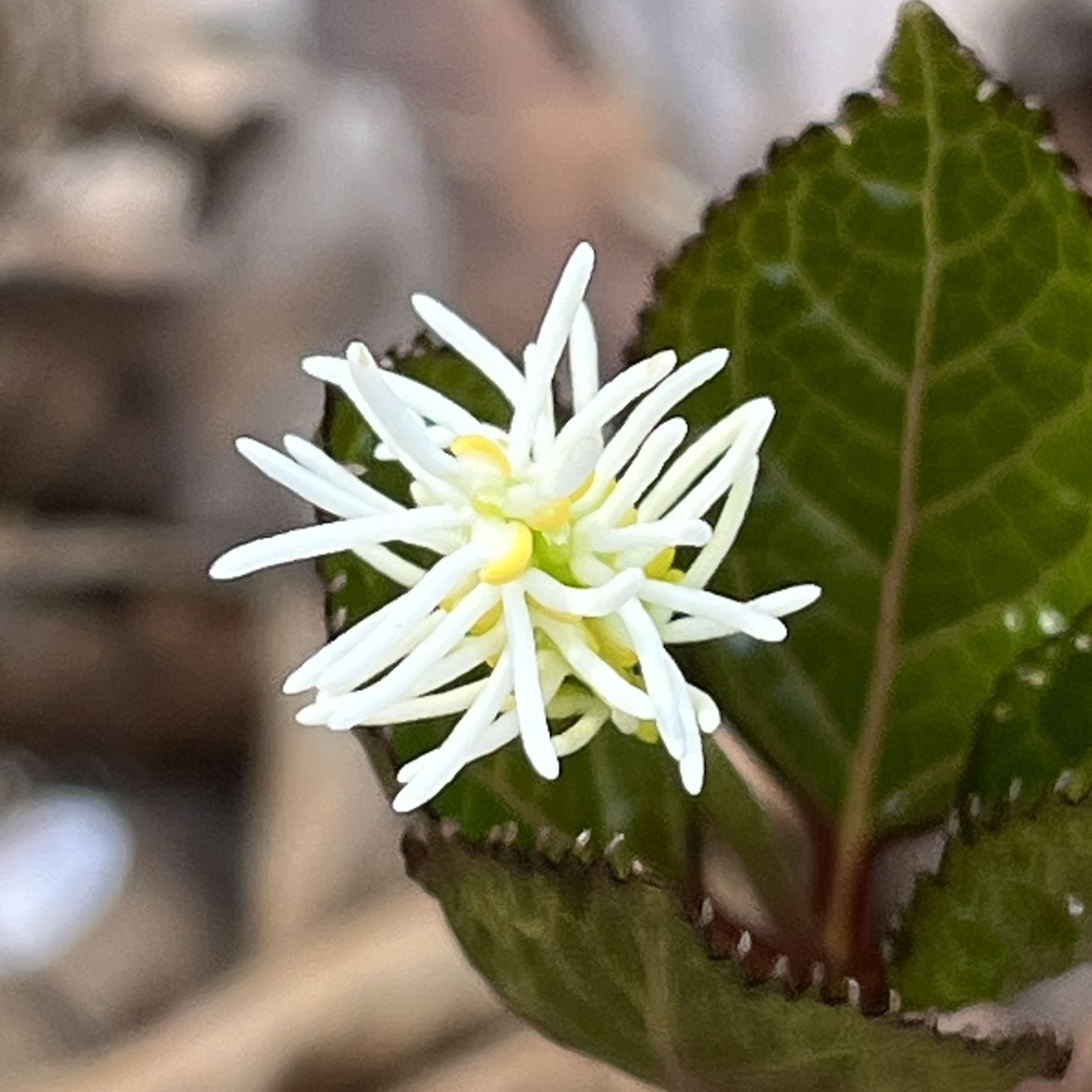ヒトリシズカの和名は平安時代末期~鎌倉時代初期の白拍子「静御前」に由来。人目につかず控えめに、ひとり静かに清楚な花を咲かせます。
The Japanese name of Chloranthus quadrifolius means “quietly alone”. It comes from a dancer named “Quiet” from the late Heian period to the early Kamakura period. It quietly blooms neat and tidy flowers alone, out of sight.
【仮名】ヒトリシズカ, ヨシノシズカ, マユハキグサ
【和名】一人静, 吉野静, 眉掃草
【英名】Chloranthus quadrifolius
【学名】Chloranthus quadrifolius, Chloranthus japonicus
【誕生】01/ 09, 02/ 04
【開花】03, 04, 05月
【花色】White
ヒトリシズカ
ヒトリシズカの概要
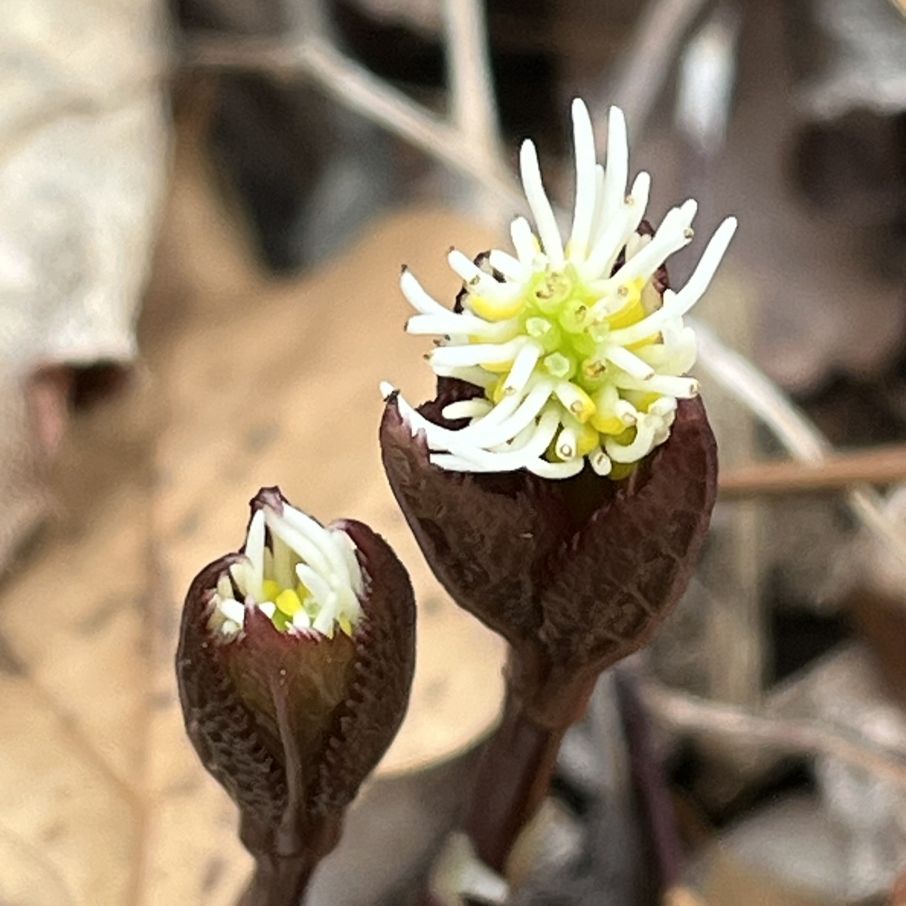
ヒトリシズカはセンリョウ科チャラン属の多年草です。日本では北海道から本州、四国、九州まで、国外では朝鮮半島、中国東北部、極東ロシアに分布し、山野で自生。人目につかず控えめに、ひとり静かに清楚な花を咲かせます。花言葉は「静謐」「隠された美」「愛にこたえて」。
ヒトリシズカの名前
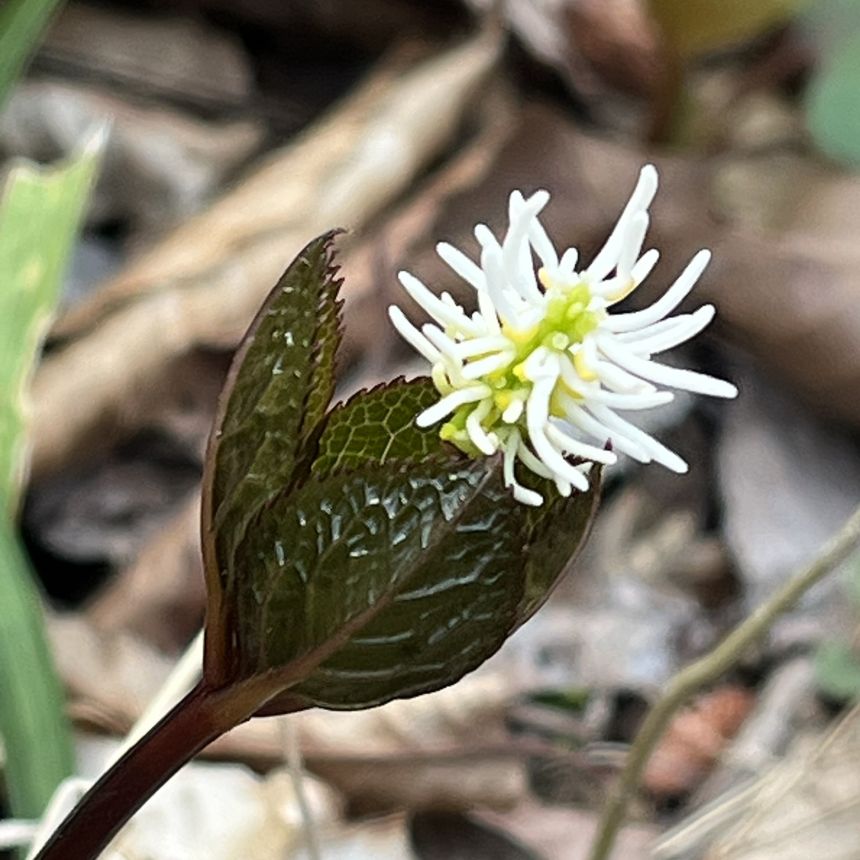
ヒトリシズカの和名は平安時代末期~鎌倉時代初期の白拍子「静御前」に由来。静御前は雨乞いの儀式で舞を舞い、大雨を降らせました。その舞姿に武将の源義経が心を奪われ、側室に迎え入れて寵愛。のちに義経の政敵である源頼朝に捕らえられたとき、義経を慕う歌を歌いました。
ヒトリシズカの姿形
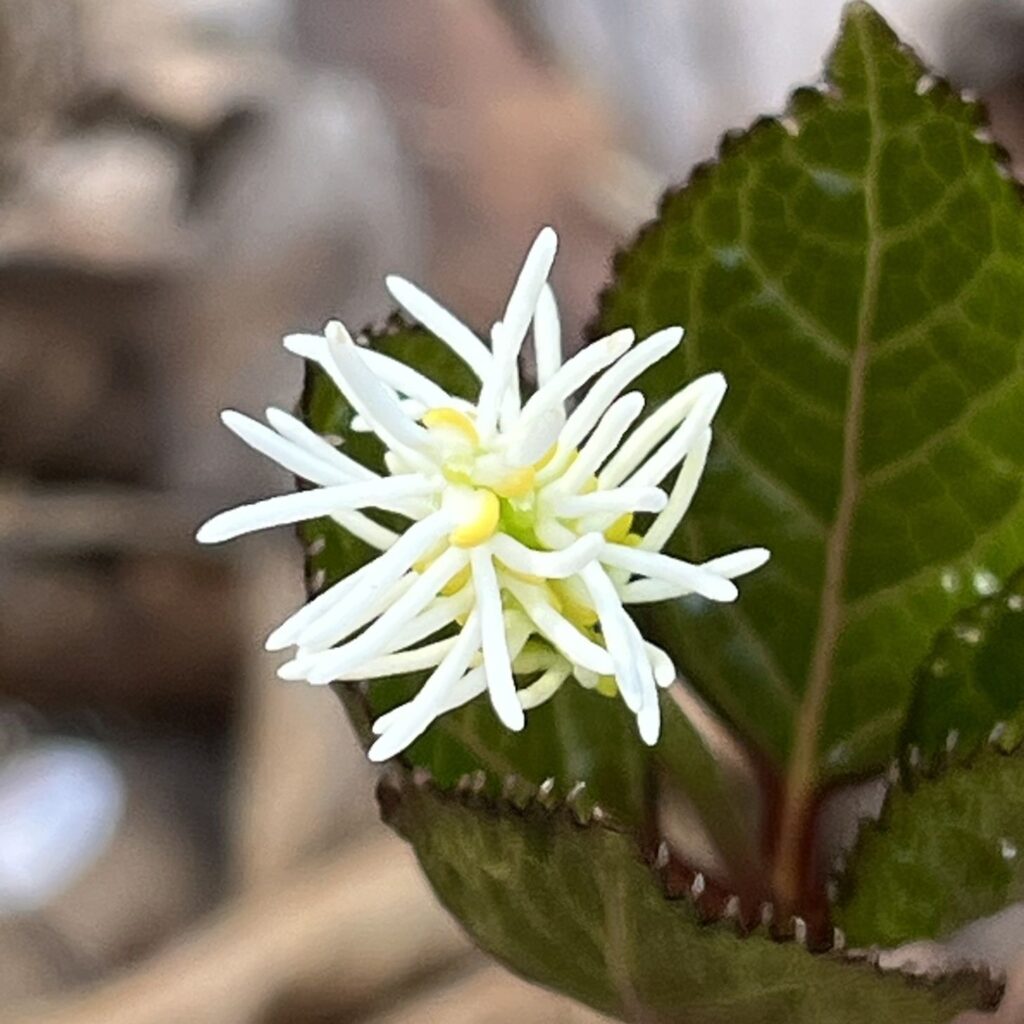
ヒトリシズカは繊維状の根茎が這い、赤紫色~緑色の茎が直立します。葉は4枚の十字対生。先の尖った卵形で表面に光沢があり、縁に鋸歯があります。花はブラシ状の穂状花序。花弁も萼片もなく、糸のような雄しべが伸び、その根元に雌しべがあります。花後は球形の核果を形成。
ヒトリシズカの近縁
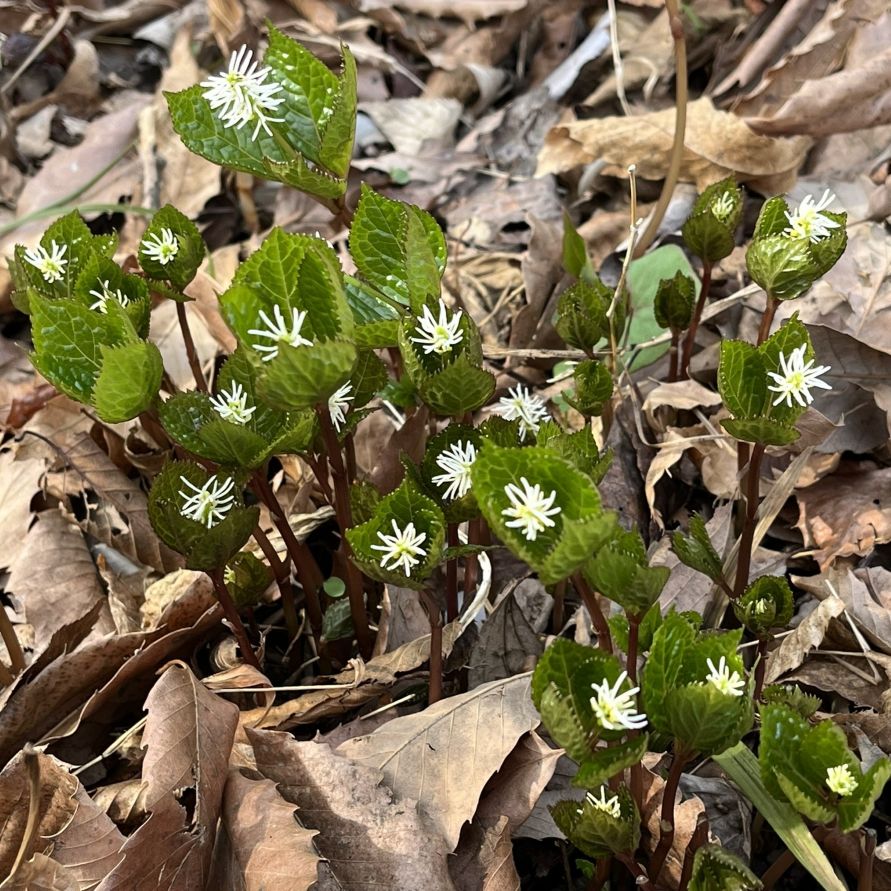
ヒトリシズカの近縁「二人静」も葉が十字対生で、花に花弁と萼片がありません。一方、花は雄しべが合着し、雌しべを包んで粒状。それが2本の花軸に整然と並びます。一人静に似ていないものの、和名の由来は同じ静御前の舞姿。2本の花穂が静御前とその亡霊に喩えられました。
Chloranthus quadrifolius
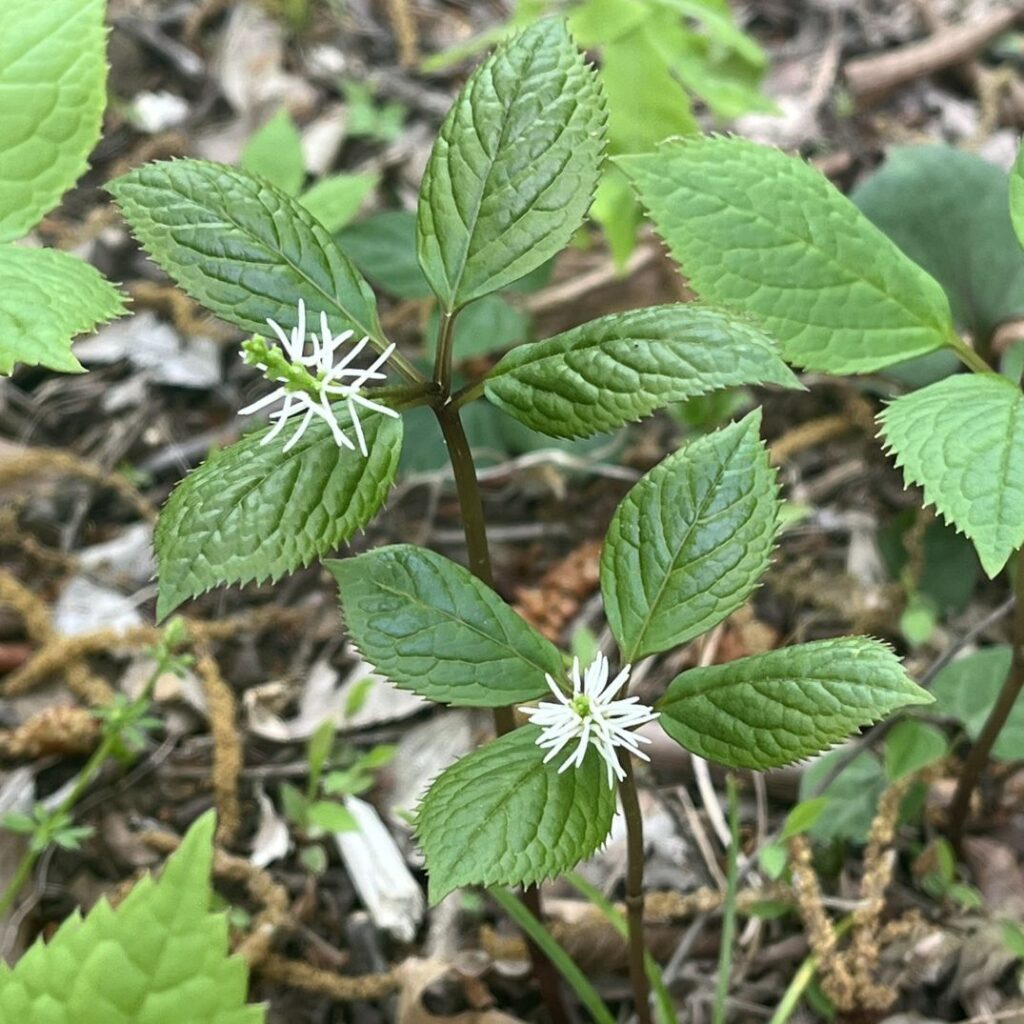
Chloranthus quadrifolius is a perennial plant of the Chloranthaceae family. It is distributed in Japan from Hokkaido to Honshu, Shikoku, and Kyushu, and overseas to the Korean Peninsula, northeastern China, and Far Eastern Russia. It grows wild in the mountains and fields. It quietly blooms neat and tidy flowers alone, out of sight. The flower language is “tranquility”, “hidden beauty”, and “responding to love”.
The Japanese name of Chloranthus quadrifolius means “quietly alone”. It comes from a dancer named “Quiet” from the late Heian period to the early Kamakura period. Quiet danced in a rain-making ceremony and brought heavy rain. The military commander Minamoto no Yoshitsune was fascinated by her dancing and took her as a concubine and loved her. Later, when Quiet was captured by Yoshitsune’s political enemy Minamoto no Yoritomo, Quiet sang a song of love for Yoshitsune.
Chloranthus quadrifolius has a fibrous rhizome and a purple-green upright stem. It has four leaves arranged in a cross pattern. The leaves are pointed, oval, glossy, and have sawtooth edges. The flowers are brush-like spikes. They have no petals or sepals, and the thread-like stamens extend and the pistil is at the base. After flowering, they form a spherical drupe.
Chloranthus serratus, a close relative of Chloranthus quadrifolius, also has leaves arranged in a cross pattern and no petals or sepals. On the other hand, the flowers are granular, with the stamens joining together and enveloping the pistil. The grains are arranged neatly on two flower stalks. Although it does not look like a quadrifolius, the Japanese name comes from the same “Quiet” dancing figure. The Japanese name means “Two Quiet”, and the two flower spikes were likened to Quiet and her ghost.

